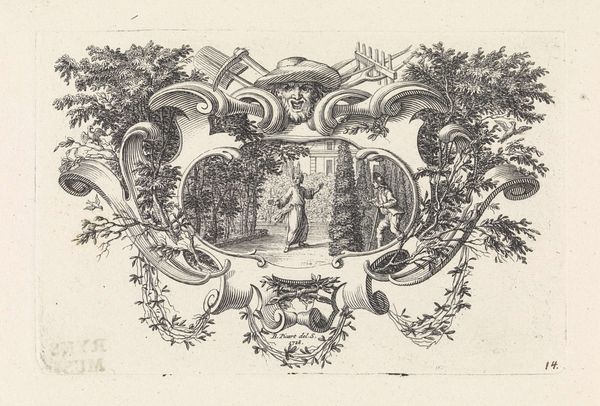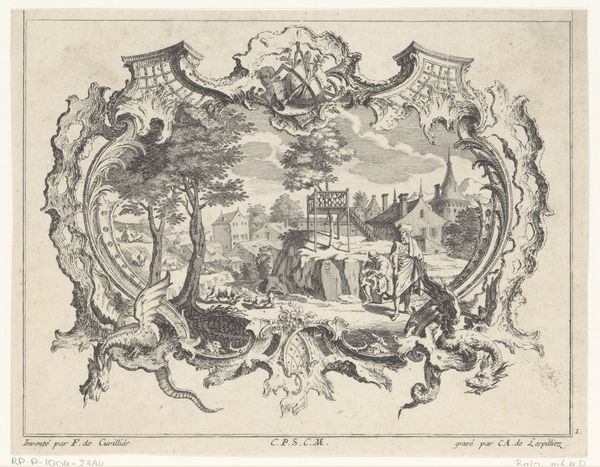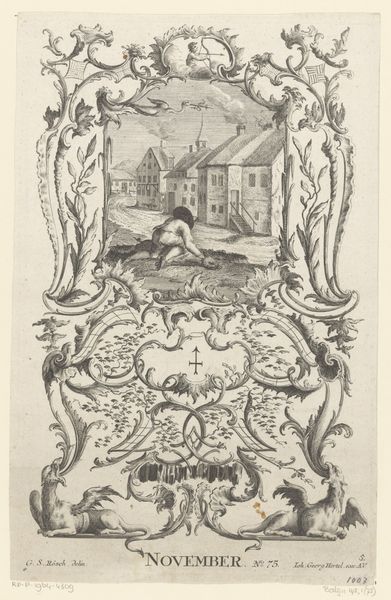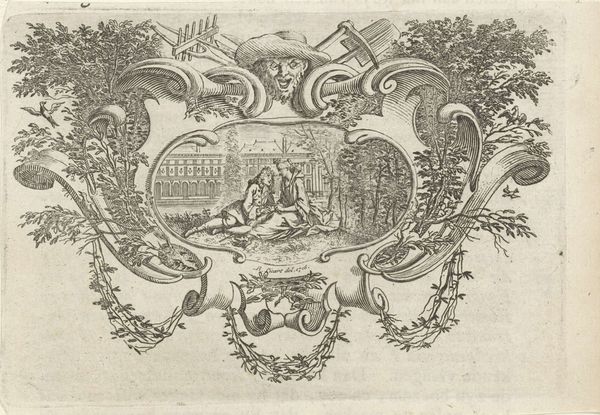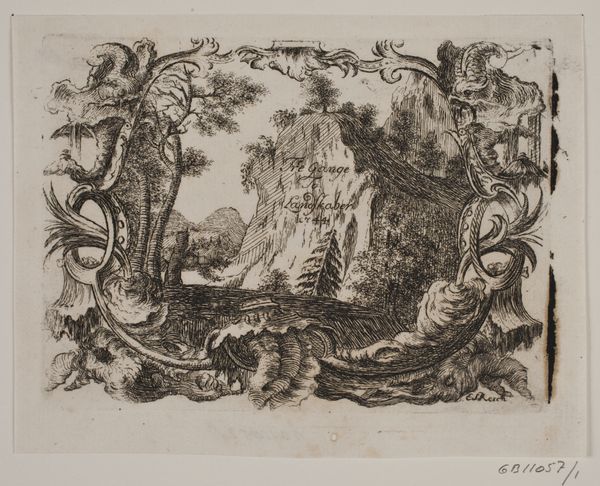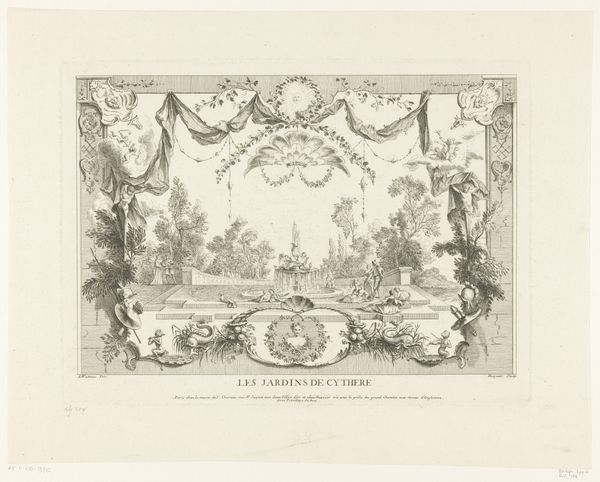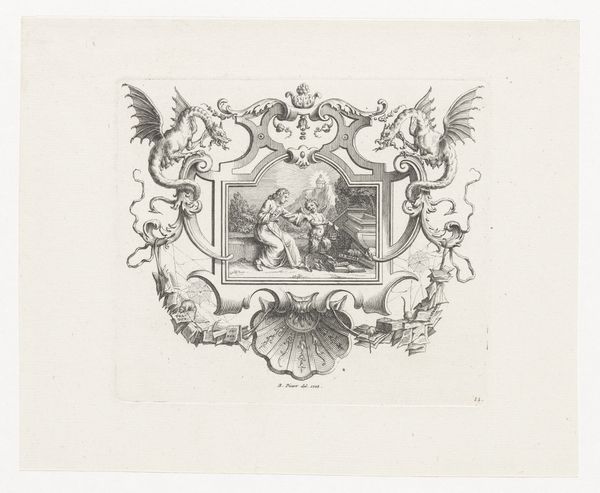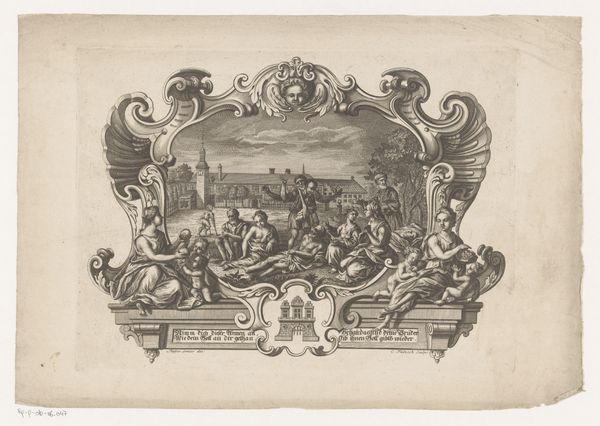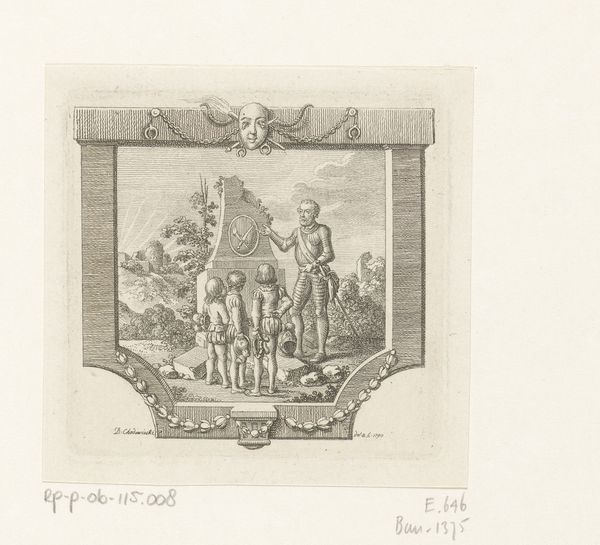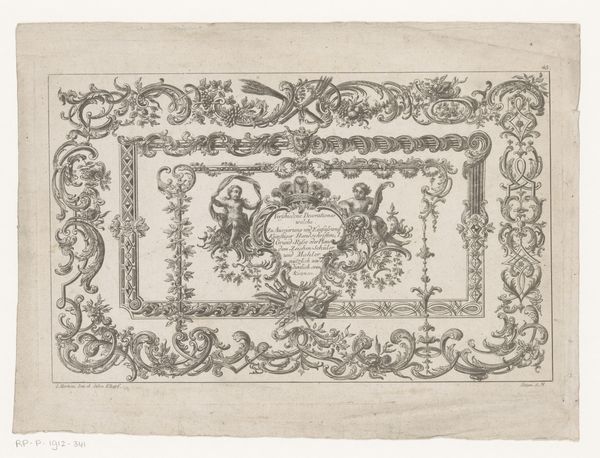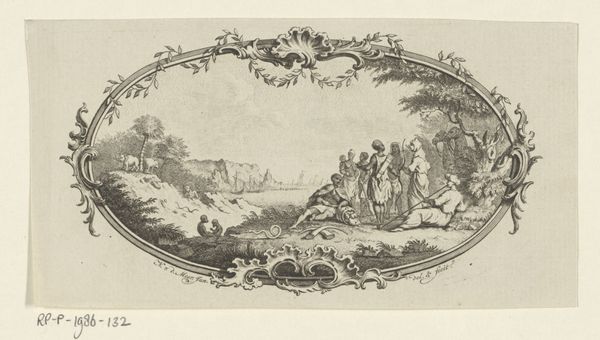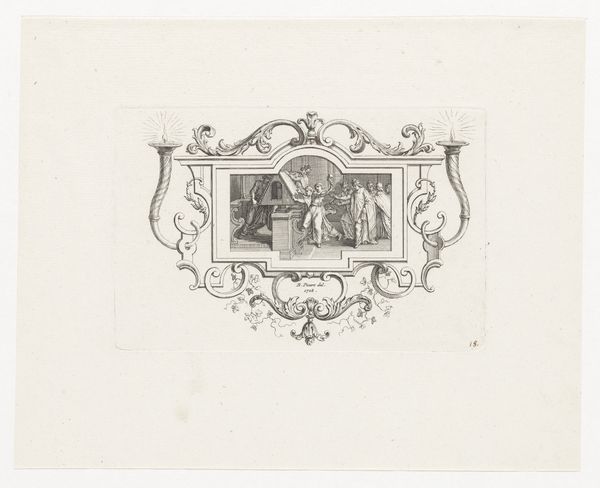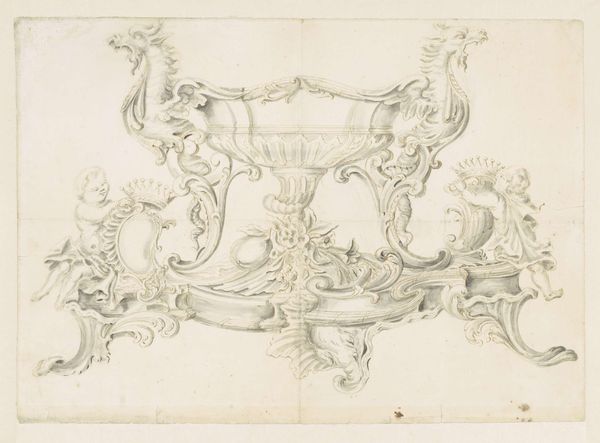
print, engraving
#
baroque
# print
#
landscape
#
cityscape
#
history-painting
#
engraving
Dimensions: height 91 mm, width 132 mm
Copyright: Rijks Museum: Open Domain
Curator: This engraving from 1718, held at the Rijksmuseum, is titled "Schrijver en zijn muze bij Parijs," or "Writer and his Muse near Paris." Bernard Picart is the artist. It immediately brings to mind notions of artistry under royal patronage. Editor: It does feel formal and a bit theatrical. The frame, embellished with leaves and even a satyr’s head, is rather extravagant considering the size of the central image of the cityscape with figures. Curator: Yes, I agree. And note how the work sits at a nexus of several important sociopolitical issues. Consider the representation of the muse—is she an active collaborator in the act of creation, or simply a decorative figurehead bestowing credibility upon the author? The gaze becomes relevant; it shapes our understanding of both figures' agency. Editor: Exactly. And speaking to the materiality of the work itself, the engraving—a reproducible medium—makes this symbolic relationship available for wider circulation and consumption. Think about the layers of labor: from the physical act of engraving to the social positioning of the writer being depicted and the conditions which enable that work to be produced in the first place. Curator: These class-based and gendered dynamics are ever present, subtly reinforced by the artist and echoed through a variety of critical outlets. Furthermore, let us consider Paris in the early 18th century: a burgeoning capital with powerful institutions, intellectual circles, and its own network of academies and salons. This creates a ripe, even competitive, environment where artistic identity is directly tied to these social contexts. Editor: What fascinates me are the details, these swirling patterns contrasted against the industrial image of the city itself. The work underscores a tension that would grow into an obsession throughout the 18th century: between nature and artifice, rural landscapes and manufactured urban scenes. Curator: Ultimately, Picart provides us with a window into not only the aesthetic preferences of his time, but the subtle power structures underpinning creative work in the Baroque period. Editor: Yes, a visual encapsulation of complex relationships shaped by class and labor practices, meticulously printed for broad consumption. An image designed, essentially, to sell a vision of creativity itself.
Comments
No comments
Be the first to comment and join the conversation on the ultimate creative platform.
